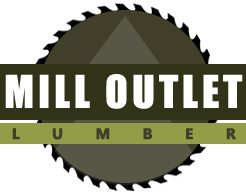Posted by admin on October 24, 2012

Wood roofing and siding are probably the most confusing things we sell. It is hard to decipher where all the terminology and practical uses have originated exactly, but here is my attempt at explaining what is important.
Wood Shingles, Western Red Cedar, as far as we are concerned, are primarily used for siding on buildings. When used for roofing it is generally recommended that you never use anything but the highest grade, #1. Shingles are saw cut on both faces and come in bundles that cover 25 square feet at recommended exposure.
Shingle Grades
#1 shingles are 100% edge grain, 100% clear, 100% heartwood, these are cut from the best wood available and anything found not meeting expectations is downgraded before bundling some mills are known to cut second growth #1 which you should be wary of, they will loosely meet the grade but have wide unstable grain pattern.
#2 Shingles are cut from lower grade blocks or accumulated from shingles that that missed #1 grade. #2 grade allows some sapwood and flat grain, but must be a minimum of 10″, 11″ or 16″ clear measured from the butt for 16″, 18″ or 24″ shingles.
#3 grade is what you might expect, cut from even lower quality blocks and the rejects from #1 and #2 grade. 3’s are allowed unlimited sapwood and flatgrain but knots are restricted to above 6″ for 16″ and 18″ and above 10″ for 24″. It really does not make sense to use #3 for roof applications at any time, but for sidewall and interior use when you are looking for a Rustic or shabby chic look they are perfect providing you take into account weather exposure and flashing details.
Another lower grade available for rustic sidewall use is #3&4 undercourse. The intended use for these is to install behind certain “sidewall” shingles that are dry, sanded or textured packaged in boxes that cover either 50 or 100 square feet at 14″ exposure for a 16″ shingle.
In addition to grade, a measure of quality, shingles also come in a selection of sizes.
16″ fivex are 16″ long and 5 butts equal 2″ total thickness
18″ Perfections are 18″ long and 5 butts equal 2 1/4″ total thickness
24″ Royals are 24″ long and 4 butts equal 2″ total thickness

All shingles and shakes for that matter are also available to some degree in a variety of treatment and certifications. Class A, B and C fire ratings and CCA treated against rot and insect damage. There are also a variety of pre or post installation treatments that can be applied to further protect or rejuvenate your roof or siding.








